From Crypto Collectibles to Digital Assets-A Comprehensive Understanding
Blur: NFT | Blur: NFT login | Blur: NFT connect | WalletConnect | Traders | What Is Blur Crypto

Blur: NFT | Blur: NFT login | Blur: NFT connect | WalletConnect | Traders | What Is Blur Crypto
Bitcoin non-fungible tokens (NFTs) have emerged as one of the most exciting and groundbreaking concepts in the world of cryptocurrency. Initially known for its role as a form of digital currency, Bitcoin has now evolved to become a platform for creating and trading unique digital assets.
Unlike traditional cryptocurrencies that can be exchanged on a like-for-like basis, Bitcoin NFTs represent one-of-a-kind digital items that can range from artwork and music to virtual real estate and digital collectibles. These NFTs are built on the Bitcoin blockchain, which ensures their transparency, security, and immutability.
Bitcoin NFTs have sparked a revolution in how we perceive and own digital assets. With the rise of decentralized finance and blockchain technology, artists, creators, and collectors are now able to tokenize their creations and establish their provenance on a global scale. This has opened up new avenues for monetization, copyright protection, and digital ownership.
Understanding the journey from crypto collectibles to digital assets is essential in grasping the potential and future of Bitcoin NFTs. As the demand for unique digital items continues to grow, Bitcoin NFTs are poised to disrupt traditional industries like art, music, gaming, and even real estate, creating a new digital economy built upon the principles of decentralization, transparency, and ownership.
Understanding Bitcoin NFTs
NFTs, or Non-Fungible Tokens, have become a popular topic in the world of cryptocurrency. These digital assets have gained significant attention due to their ability to represent ownership of unique items on the blockchain. In this article, we will explore the evolution of Bitcoin NFTs from crypto collectibles to digital assets and understand their significance in the cryptocurrency ecosystem.
The Rise of Crypto Collectibles
Bitcoin NFTs started gaining traction with the rise of Crypto Collectibles. These are unique digital tokens created using blockchain technology that represent ownership of virtual items, such as in-game assets or digital artwork. Crypto Collectibles popularized the concept of digital ownership and brought mainstream attention to the potential of NFTs.
Platforms like CryptoKitties were among the first to introduce Crypto Collectibles, allowing users to buy, sell, and breed unique virtual cats. These virtual cats became highly sought after, with some rare breeds selling for thousands of dollars. The success of CryptoKitties paved the way for the explosion of NFTs in the crypto space.
The Evolution to Digital Assets
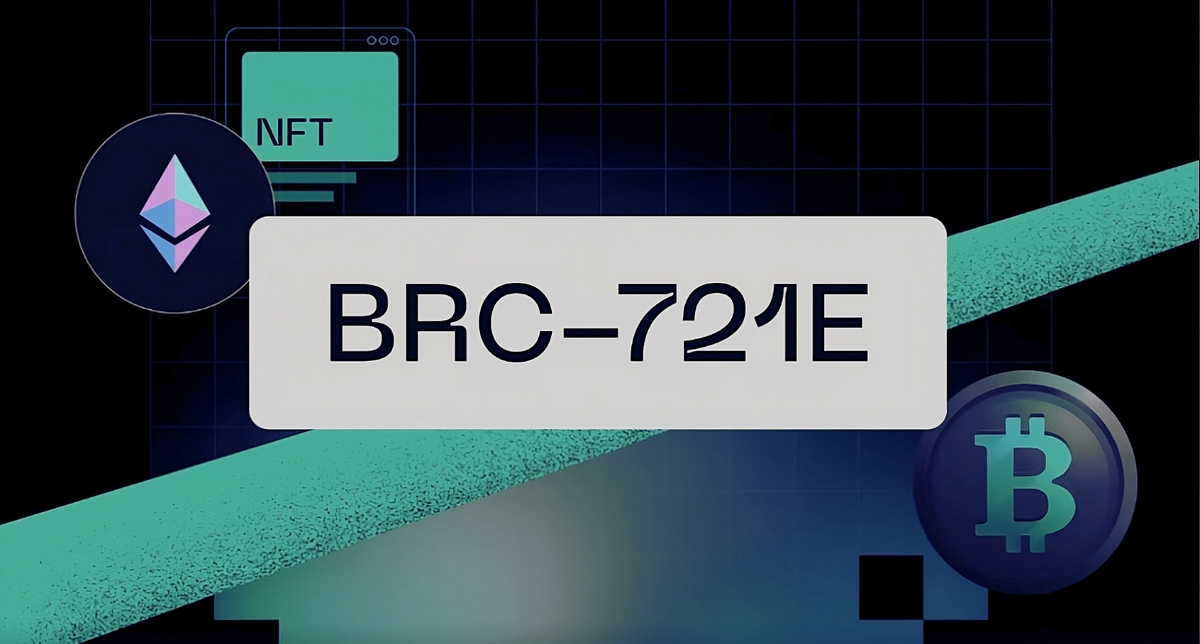
As the concept of NFTs gained popularity, it started evolving beyond just collectible items. Bitcoin NFTs began representing ownership of various digital assets, including artworks, music, domain names, and even virtual real estate. This expansion opened up a world of possibilities for artists, creators, and collectors to monetize and trade their digital creations.
COME ACCEDERE ALL’ACCOUNT DI BLUR.IO
One significant development in the Bitcoin NFT space has been the integration of decentralized finance (DeFi) and NFTs. Users can now collateralize their NFTs and use them as collateral to borrow funds or earn interest, further expanding the utility of these digital assets.
The Significance of Bitcoin NFTs
Bitcoin NFTs hold immense significance in the cryptocurrency ecosystem. They provide a way for creators and artists to gain recognition and monetize their work in a decentralized and transparent manner. Additionally, NFTs enable collectors to own and trade unique digital assets, fostering a new form of digital ownership.
In conclusion, Bitcoin NFTs have evolved from being simple crypto collectibles to representing ownership of various digital assets. Their popularity continues to grow, and their integration with decentralized finance provides new opportunities for users. As NFTs reshape the art and digital ownership landscape, they are set to play a significant role in the future of cryptocurrency.
Exploring the Evolution
As the world of cryptocurrency continues to evolve, so too do the ways in which digital assets are created and traded. One of the most intriguing developments in recent years has been the rise of non-fungible tokens (NFTs), which have taken the concept of collectibles to a whole new level.
NFTs are unique digital assets that are recorded on a blockchain, giving them a level of scarcity and authenticity that is impossible to replicate. While bitcoin was initially associated with financial transactions and store of value, NFTs have expanded its use case to include digital artwork, virtual real estate, and even in-game items.
But what sets NFTs apart from traditional collectibles? First and foremost, NFTs are indivisible, meaning that they cannot be divided into smaller units like bitcoin or other cryptocurrencies. Each NFT represents a whole, unique item, whether it's a piece of digital art or a virtual land plot.
Another key difference is that NFTs can include metadata, or additional information, that provides context and provenance for the digital asset. This can include details about the creator, the date of creation, and any other relevant information that adds to the value and story of the NFT.
Furthermore, the ownership and transaction history of NFTs are recorded on a blockchain, making them transparent and verifiable. This creates a level of trust and authenticity that is often lacking in the world of physical collectibles, where provenance can be easily forged.
As NFTs continue to gain traction, they are also prompting a shift in the way we think about ownership. With traditional collectibles, ownership is often defined by physical possession. However, with NFTs, ownership is tied to a digital wallet address, which means that it is much easier to transfer and prove ownership of a digital asset.
This evolution from crypto collectibles to digital assets has led to an explosion of creativity and innovation in the space. Artists and creators are now able to monetize their digital creations in ways that were previously impossible, and collectors have a new medium through which they can express their tastes and interests.
So, whether you're a seasoned collector or just starting to explore the world of NFTs, there's no denying that this evolution is here to stay. To learn more about accessing your account on blur-io-nft.com, click here.
From Crypto Collectibles
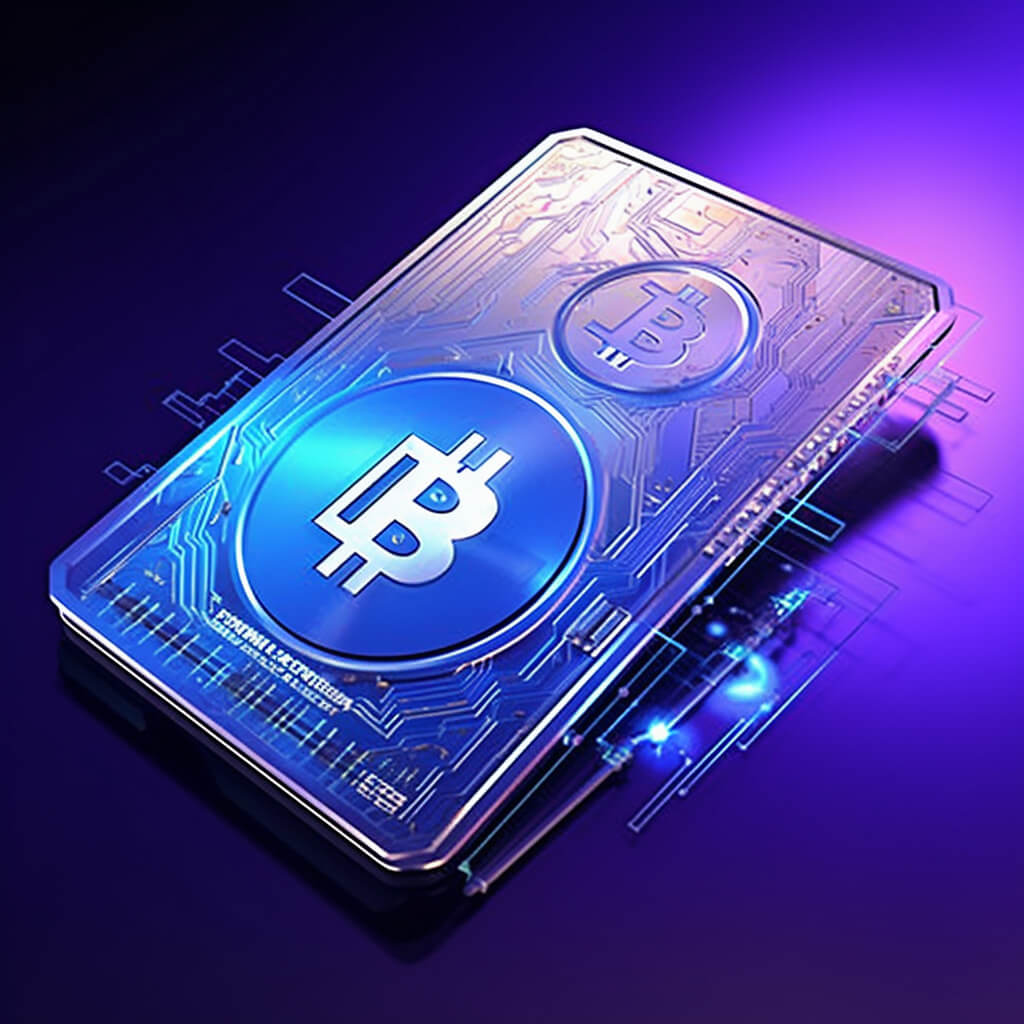
Bitcoin NFTs have their roots in the world of crypto collectibles. These digital assets gained popularity in the mid-2010s, with the release of games like CryptoKitties that allowed users to buy, sell, and breed unique digital cats using blockchain technology. Collectors could prove ownership and rarity of their digital pets through non-fungible tokens.
The success of CryptoKitties paved the way for the creation of other crypto collectibles. These digital assets can range from virtual trading cards and virtual pets to virtual real estate and virtual artwork. Each asset is unique and can be bought, sold, and traded on various online platforms.
What sets crypto collectibles apart from traditional collectibles is the underlying technology that powers them. NFTs are built on blockchain networks like Ethereum, ensuring immutability, transparency, and security. Each NFT contains a unique token ID, which serves as proof of ownership and authenticity.
Collectors are drawn to crypto collectibles because of their scarcity and the ability to showcase their digital assets to the world. Additionally, the decentralized nature of blockchain technology eliminates the need for intermediaries and allows for peer-to-peer transactions.
While crypto collectibles are predominantly used for gaming and entertainment purposes, they have evolved into a broader category known as digital assets. These digital assets have expanded beyond the realm of collectibles and can represent anything of value, including virtual real estate, virtual artwork, and even domain names.
The evolution from crypto collectibles to digital assets has opened up new possibilities and use cases for NFTs. From virtual fashion items and digital land ownership to authenticated digital artwork and virtual concert tickets, the potential for NFTs to revolutionize various industries is seemingly limitless.
Overall, the rise of crypto collectibles paved the way for the creation and adoption of NFTs. These digital assets have transformed the way we view and interact with digital ownership, and the evolution to digital assets signals a promising future for NFTs and blockchain technology as a whole.
To Digital Assets

In the ever-evolving world of blockchain technology, Bitcoin NFTs have emerged as a game-changer. With their ability to represent ownership of unique digital assets, they have expanded the possibilities of what can be owned, traded, and valued. NFTs, or non-fungible tokens, have transformed the idea of collectibles into something more profound.
The Birth of NFTs
The concept of NFTs was first introduced in 2017 with the launch of the Ethereum-based game, CryptoKitties. These digital collectible cats were each unique and could be bought, sold, and bred on the blockchain. This marked the beginning of a new era in blockchain technology, where digital assets gained real-world value.
Since then, NFTs have expanded beyond the world of gaming and collectibles. Artists, musicians, and creators of all kinds have recognized the potential of NFTs as a way to monetize their work and establish a direct relationship with their audience. NFTs have become a means to sell digital art, music albums, virtual real estate, and even domain names. The possibilities are virtually endless.
The Value of Digital Assets
What sets NFTs apart from other forms of digital content is their uniqueness and provable ownership. Each NFT is created as a token on the blockchain, representing a specific digital asset. This provides a level of scarcity and authenticity that cannot be replicated in the digital world.
Furthermore, NFTs enable creators to earn royalties on secondary sales. Whenever an NFT is sold or traded on a marketplace, the creator can receive a percentage of the transaction value. This empowers creators and gives them a way to benefit financially from the increased value of their digital assets over time.
In conclusion, the evolution from crypto collectibles to digital assets represents a paradigm shift in the way we perceive and value digital content. NFTs have opened up new opportunities for creators and collectors alike, creating a thriving ecosystem where digital assets can be bought, sold, and enjoyed in a decentralized manner. The future of NFTs and digital assets is bright, promising exciting new possibilities for the world of art, collectibles, and beyond.
The Concept of NFTs
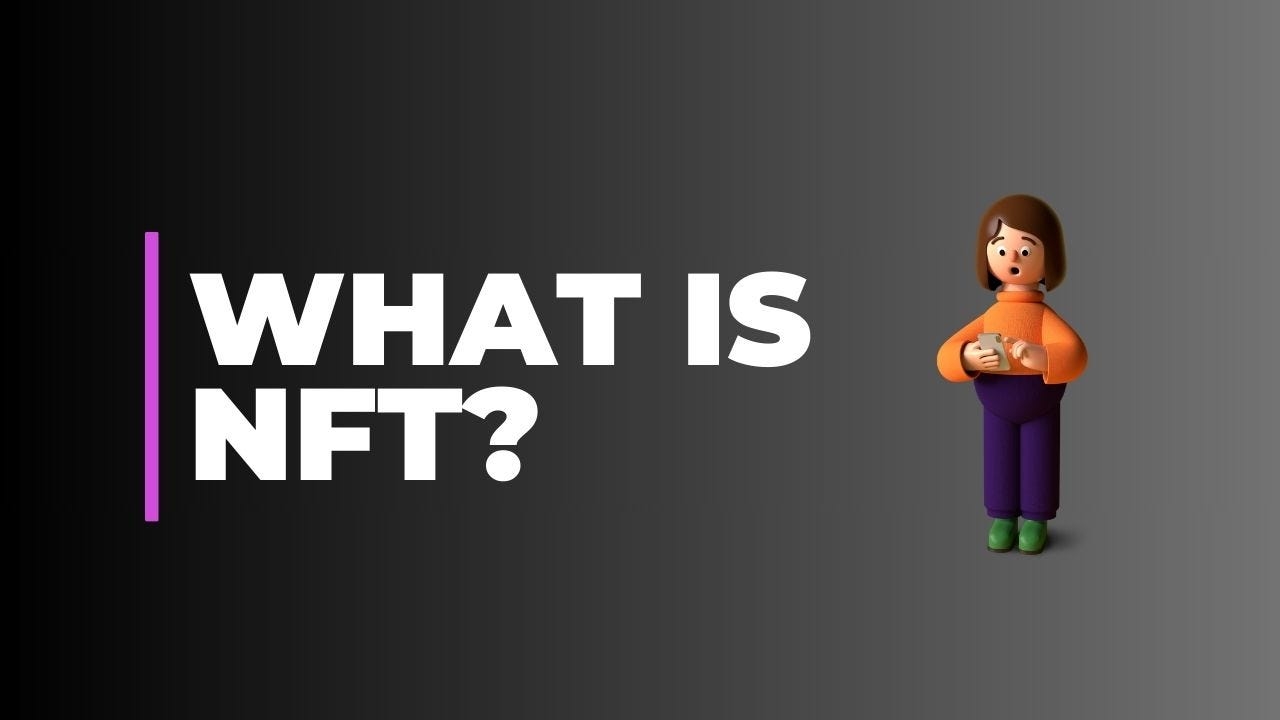
Non-Fungible Tokens (NFTs) have emerged as a revolutionary concept in the world of cryptocurrency and blockchain technology. Unlike traditional cryptocurrencies such as bitcoin or ethereum, NFTs represent unique assets that cannot be exchanged on a one-to-one basis.
The uniqueness of NFTs is derived from their underlying blockchain technology, which ensures each token has a distinct digital identity. This makes NFTs ideal for representing ownership of digital assets such as artwork, music, videos, or even virtual real estate.
NFTs have gained popularity due to their ability to solve the problem of digital ownership. Before the advent of NFTs, it was difficult to establish true ownership and scarcity of digital assets. With NFTs, artists, creators, and collectors can prove the authenticity and uniqueness of their digital creations.
The value of NFTs is based on the principle of supply and demand. The scarcity of a particular NFT can drive up its value, as collectors compete to own a unique digital asset. The blockchain acts as a transparent and immutable ledger, providing a permanent record of each NFT's ownership history.
Furthermore, NFTs have given rise to new and innovative business models. Artists can now sell their digital creations directly to consumers, bypassing traditional intermediaries. Collectors can also trade NFTs on online marketplaces, facilitating a vibrant secondary market for digital assets.
However, it is important to note that the concept of NFTs has also sparked debates and controversies. Critics argue that NFTs contribute to environmental damage due to the energy-intensive nature of blockchain technology. Others question the long-term value and sustainability of digital assets in a rapidly changing technological landscape.
Despite these criticisms, NFTs have the potential to reshape the art, gaming, and entertainment industries. As more individuals and businesses recognize the value and potential of digital ownership, NFTs are likely to continue evolving and expanding their reach.
How NFTs Differ from Cryptocurrencies
While NFTs and cryptocurrencies both exist on blockchain technology, there are several key differences that set them apart.
Indivisibility
Unlike cryptocurrencies, NFTs are indivisible. This means that they cannot be divided into smaller units like Bitcoin or other cryptocurrencies can. NFTs represent unique assets or collectibles, making them inherently different from divisible digital currencies.
Ownership and Authenticity
One of the main advantages of NFTs is the ability to prove ownership and authenticity of a digital asset. Each NFT is uniquely identified and can be easily authenticated on the blockchain. On the other hand, cryptocurrencies represent fungible tokens that can be exchanged on a like-for-like basis without any unique identifier.
Interchangeability
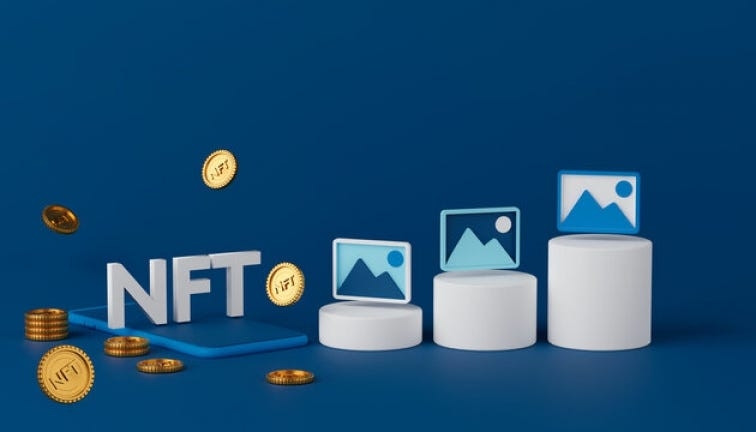
NFTs are not interchangeable in the same way that cryptocurrencies are. While cryptocurrencies can be exchanged like traditional currencies, NFTs hold individual value based on their uniqueness and scarcity. Each NFT has its own distinct value and cannot be exchanged for another NFT on a like-for-like basis.
Functionality
NFTs are often associated with digital collectibles or artwork, while cryptocurrencies are primarily used as a medium of exchange or store of value. NFTs can represent a wide range of digital assets, including virtual real estate, in-game items, or even music rights, whereas cryptocurrencies are primarily designed as a form of digital currency.
NFTs are indivisible, unlike cryptocurrencies.
NFTs prove ownership and authenticity of digital assets, while cryptocurrencies are fungible tokens.
NFTs are not interchangeable like cryptocurrencies; each NFT has its own distinct value.
NFTs represent various digital assets, while cryptocurrencies are primarily used as digital currency.
The Rise of Bitcoin NFTs
Bitcoin NFTs have quickly emerged as a dominant force within the world of cryptocurrency and digital assets. NFTs, or non-fungible tokens, are unique digital assets that are built on blockchain technology, allowing for the ownership and transfer of one-of-a-kind digital items.
While NFTs were initially associated with art and collectibles, the rise of Bitcoin NFTs has expanded the scope of what can be tokenized and sold as a digital asset. Bitcoin NFTs leverage the power and security of the Bitcoin blockchain to create and trade rare and valuable digital items.
One of the main reasons for the rise of Bitcoin NFTs is the increased interest and demand for digital assets within the cryptocurrency community. As more people become familiar with Bitcoin and digital currencies, the desire to own unique and scarce digital items has grown.
Bitcoin NFTs offer a new and exciting way to collect and own digital assets. Artists, creators, and developers can tokenize their work on the Bitcoin blockchain, providing buyers with verifiable ownership and a digital certificate of authenticity. This has opened up new possibilities for artists to monetize their work and for collectors to invest in rare and valuable digital items.
The Evolution of Bitcoin NFTs

Bitcoin NFTs have evolved from simple crypto-collectibles to powerful digital assets. Initially, Bitcoin NFTs were limited to simple tokens and digital artworks, but as the market has matured, more complex and interactive NFTs have emerged.
Now, Bitcoin NFTs can represent a wide range of digital assets, including virtual real estate, virtual goods, virtual currencies, and even digital identities. This evolution has opened the door to new business models and opportunities within the digital economy.
With the rise of Bitcoin NFTs, the concept of digital ownership is being redefined. Traditional forms of ownership, such as physical property or securities, are being challenged by the idea that true ownership can exist in the digital realm.
Strong technological advancements and the growing interest in Bitcoin NFTs have paved the way for this revolution in digital ownership. As more people recognize the value and potential of Bitcoin NFTs, the market for these digital assets will continue to grow and evolve.
The Future of Bitcoin NFTs
The future of Bitcoin NFTs looks bright. As the technology and understanding of NFTs improve, we can expect to see more innovative use cases and applications of Bitcoin NFTs.
One potential area of growth for Bitcoin NFTs is in the gaming industry. As blockchain technology continues to gain traction in gaming, the integration of Bitcoin NFTs can provide players with unique in-game items and assets that hold real-world value.
Additionally, as more industries and businesses embrace the potential of Bitcoin NFTs, we may see new ways of tokenizing and trading digital assets emerge. From tickets and event passes to digital certificates and licenses, the possibilities for Bitcoin NFTs are endless.
In conclusion, the rise of Bitcoin NFTs marks an exciting chapter in the evolution of digital assets. With the power of Bitcoin and blockchain technology, unique and valuable digital items can now be bought, sold, and owned in a secure and transparent manner.
As the market for Bitcoin NFTs continues to grow and evolve, we can expect to see new applications and increased adoption. The potential for Bitcoin NFTs to reshape the digital economy is immense, and it will be fascinating to see where this technology takes us in the years to come.
The Benefits of Bitcoin NFTs
Bitcoin NFTs, or non-fungible tokens, have gained significant attention in recent years due to their unique properties and potential applications. Here, we will explore some of the benefits of Bitcoin NFTs and why they have become such a popular digital asset.
Digital Ownership

One of the key benefits of Bitcoin NFTs is the ability to establish verifiable digital ownership. Unlike traditional digital assets that can be easily copied and shared, Bitcoin NFTs are built on the blockchain, which provides a decentralized and transparent ledger. This means that once a Bitcoin NFT is created, its ownership can be easily verified and tracked by anyone in the blockchain network. This creates a level of trust and authenticity that is not possible with traditional digital assets.
Scarcity and Rarity
Bitcoin NFTs also offer the advantage of scarcity and rarity. Each Bitcoin NFT is unique and cannot be replicated, making it truly one-of-a-kind. This scarcity adds value to Bitcoin NFTs as collectors and enthusiasts are willing to pay a premium for owning these exclusive digital assets. Additionally, the programmable nature of Bitcoin NFTs allows creators to set specific limits on the number of tokens available, creating an artificial scarcity that drives demand and price.
Monetization Opportunities

Bitcoin NFTs open up a world of monetization opportunities for creators. Artists, musicians, and content creators can tokenize their digital creations and sell them directly to their audience without the need for middlemen or intermediaries. This enables creators to fully monetize their work and establish a direct connection with their fans. Additionally, Bitcoin NFTs can also be easily traded on various decentralized marketplaces, providing creators with additional revenue streams and the potential for increased exposure.
Digital Ownership
Bitcoin NFTs provide verifiable digital ownership through the blockchain.
Scarcity and Rarity
Bitcoin NFTs are unique and cannot be replicated, making them valuable.
Monetization Opportunities
Bitcoin NFTs allow creators to directly monetize their digital creations.
In conclusion, Bitcoin NFTs offer several benefits such as verifiable ownership, scarcity, and monetization opportunities. As the technology continues to evolve, we can expect more innovative use cases and opportunities for Bitcoin NFTs to revolutionize the digital asset landscape.
Art and Bitcoin NFTs
The advent of Bitcoin non-fungible tokens (NFTs) has revolutionized the way we perceive and interact with art. NFTs have dramatically changed the art market by providing artists and collectors with a new way to authenticate, sell, and trade digital art.
The Intersection of Art and Technology
Bitcoin NFTs bring together the worlds of art and technology, allowing artists to create unique digital works and tokenizing them on the blockchain. This intersection has opened up new possibilities for creativity, as artists can now experiment with different mediums and styles that were previously limited by physical constraints.
Furthermore, the use of blockchain technology provides a transparent and immutable record of ownership, ensuring the authenticity and provenance of digital artworks. This has addressed one of the biggest challenges in the art world, where the verification of originality and ownership has traditionally been a complex and subjective process.
Creating a New Economy for Digital Art
Bitcoin NFTs have also introduced a new economy for digital art. Artists can now easily sell and monetize their digital creations directly to collectors, without the need for intermediaries such as galleries or auction houses. This enables artists to have more control over their work and receive a larger share of the profits.
Collectors, on the other hand, can now invest in digital art with the confidence that their NFT represents a unique and valuable asset. They can showcase their collections, trade or sell their NFTs in various marketplaces, and potentially profit from the increasing demand for digital art.
The innovative nature of Bitcoin NFTs has attracted attention from both artists and collectors, resulting in a booming market for digital art. This newfound popularity has also prompted traditional art institutions and galleries to embrace digital art and NFTs, further blurring the lines between the physical and digital art worlds.
In conclusion, Bitcoin NFTs have significantly impacted the art world, providing artists with new opportunities and collectors with unique assets. The intersection of art and technology has created a new economy for digital art, fostering creativity, transparency, and accessibility in the art market.
The Potential of Bitcoin NFTs in the Gaming Industry
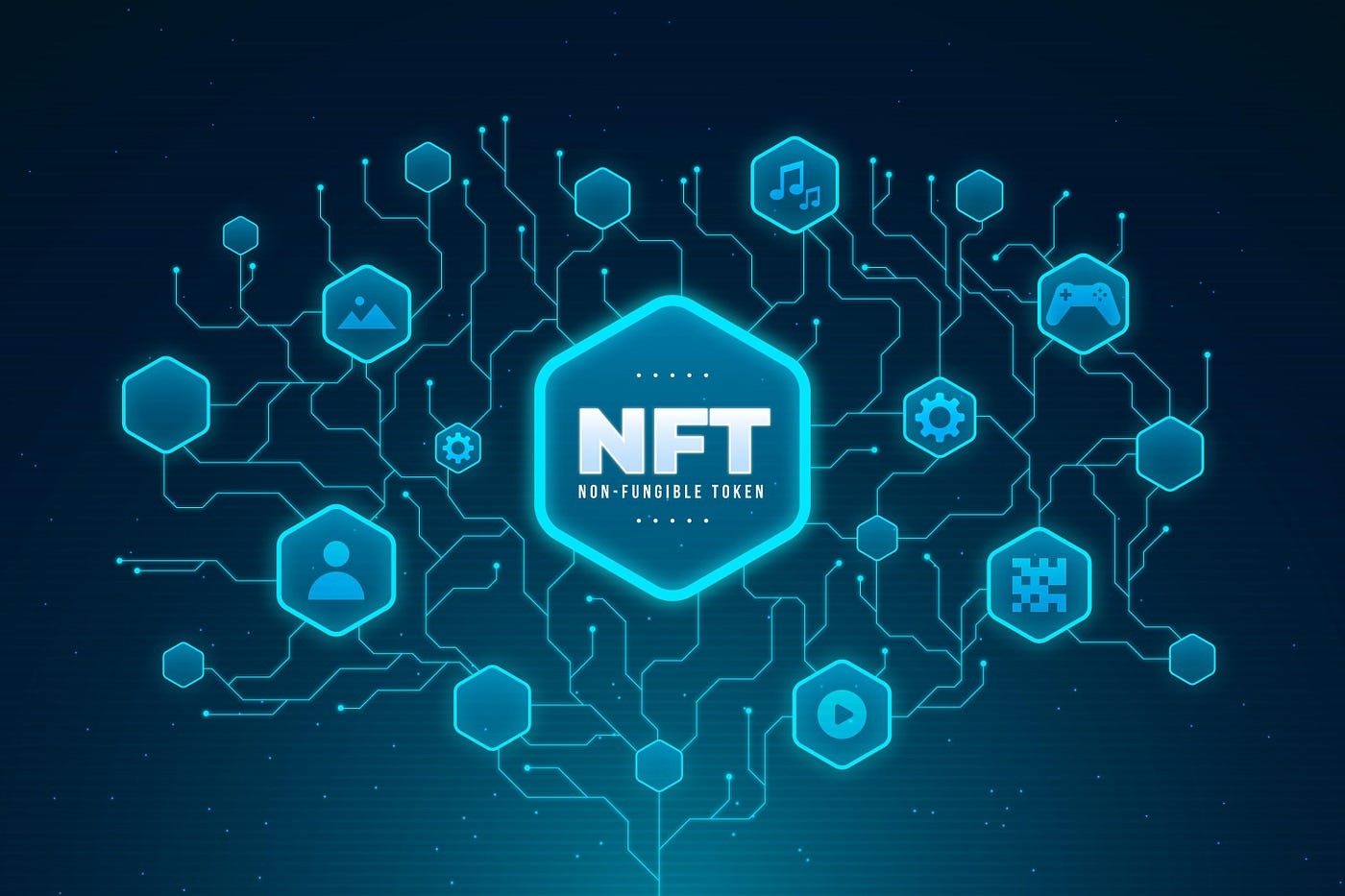
The advent of Bitcoin and blockchain technology has brought about numerous innovations in various industries, and the gaming industry is no exception. With the emergence of Non-Fungible Tokens (NFTs), there is a new realm of possibilities for gamers and game developers alike.
1. Ownership and Authenticity
One of the key advantages of Bitcoin NFTs in the gaming industry is the concept of ownership and authenticity. NFTs are unique tokens that can represent specific in-game items, characters, or even entire virtual worlds. By utilizing blockchain technology, these assets can be owned by individuals with a verifiable proof of ownership. This not only allows gamers to truly own their digital assets but also creates a sense of scarcity and exclusivity, which can add value to these items.
2. Interoperability and Cross-Platform Use
Bitcoin NFTs can also enable interoperability and cross-platform use in the gaming industry. Traditionally, in-game assets are locked within specific games or platforms, making them unusable in other settings. However, with NFTs, these assets can be tokenized and transferred between different platforms and games. This opens up new opportunities for gamers to have a seamless experience across various gaming ecosystems and enables the creation of a vibrant secondary market for these assets.
3. Incentives for Gameplay and Creativity
Bitcoin NFTs can provide new incentives for gameplay and creativity in the gaming industry. With the ability to truly own and trade valuable in-game assets, gamers are motivated to invest more time and effort into their gameplay. This can lead to increased engagement and retention rates for games, as players strive to acquire rare and valuable NFTs. Additionally, the ability to create and sell unique NFTs can incentivize players to unleash their creativity and artistic skills, fostering a vibrant community of content creators within the gaming industry.
4. Decentralization and Control

The decentralized nature of Bitcoin NFTs gives gamers more control over their digital assets. With traditional gaming models, players are often at the mercy of centralized game developers who can arbitrarily change or remove in-game assets. However, with NFTs, players have verifiable ownership and control over their assets, ensuring that their investments are protected. This shift towards decentralization empowers gamers and provides them with more autonomy and freedom within virtual worlds.
In conclusion, the potential of Bitcoin NFTs in the gaming industry is vast. From ownership and authenticity to interoperability and incentives for gameplay and creativity, these digital assets bring a new level of immersion, value, and possibility to the world of gaming. As blockchain technology continues to evolve, we can expect to see even more innovative use cases for Bitcoin NFTs in the gaming industry.
Investing in Bitcoin NFTs
With the growing popularity of Bitcoin and the emergence of NFTs (non-fungible tokens), investing in Bitcoin NFTs has become an exciting and potentially lucrative opportunity. NFTs, which are unique digital assets that can represent various forms of ownership or artwork, have gained significant attention in recent years. Bitcoin NFTs, in particular, combine the scarcity and value proposition of Bitcoin with the unique properties of NFTs, creating a new asset class that is revolutionizing the digital art and collectibles market.
Why Invest in Bitcoin NFTs?
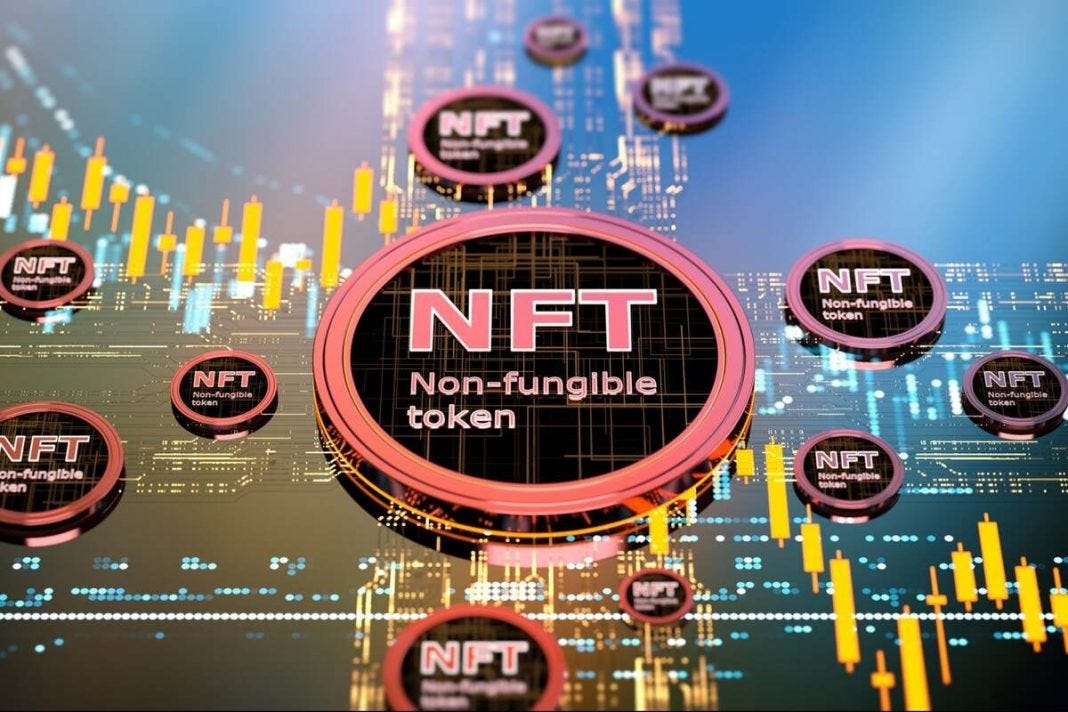
There are several compelling reasons to consider investing in Bitcoin NFTs:
Potential for high returns: Just like any other investment, Bitcoin NFTs have the potential to generate significant returns. The rapidly growing demand for digital art and collectibles, combined with the limited supply of Bitcoin NFTs, can drive up their value over time.
Diversification: Investing in Bitcoin NFTs offers diversification for those already holding Bitcoin or other cryptocurrencies. By adding Bitcoin NFTs to your portfolio, you can tap into the growing market of digital assets and potentially reduce the risk associated with a single investment.
Supporting artists and creators: Buying Bitcoin NFTs directly from artists and creators provides a unique opportunity to support their work and contribute to the growth of the digital art community. Many artists are embracing NFTs as a new way to monetize their creations, and investing in their NFTs can have a positive impact on their careers.
Participating in a growing ecosystem: The Bitcoin NFT ecosystem is constantly evolving, with new platforms, marketplaces, and opportunities emerging. By investing in Bitcoin NFTs, you can actively participate in this dynamic ecosystem and potentially discover new investment options along the way.
Considerations for Investing in Bitcoin NFTs
While investing in Bitcoin NFTs can be exciting, it's essential to consider the following factors:
Market volatility
The market for Bitcoin NFTs can be highly volatile, with prices fluctuating rapidly. It's crucial to have a well-defined investment strategy and be prepared for potential market downturns.
Platform reputation
When buying Bitcoin NFTs, it's essential to choose reputable platforms and marketplaces. Research the platform's security measures, user reviews, and track record to ensure a safe and secure investment experience.
Understanding the artwork
Before investing in a Bitcoin NFT, it's crucial to understand the artwork or collectible being represented. Research the artist, their previous works, and the significance of the NFT to make an informed investment decision.
Long-term value
Consider the long-term value of the Bitcoin NFT. Will it hold its value over time, or is it a short-term trend? Understanding the potential demand and utility of the NFT can help gauge its long-term value proposition.
Investing in Bitcoin NFTs can be an exciting and rewarding venture for those interested in the digital art and collectibles market. By understanding the potential returns, diversification benefits, and considerations involved, investors can make informed decisions and potentially capitalize on this emerging asset class.
The Future of Bitcoin NFTs
Bitcoin NFTs have already made a significant impact on the world of digital assets and collectibles, but what does the future hold for this emerging technology?
1. Increased Adoption
As more people become familiar with Bitcoin and cryptocurrencies, we can expect to see a significant increase in the adoption of Bitcoin NFTs. Digital artists, content creators, and collectors are starting to recognize the unique value that NFTs can offer, and this trend is likely to continue as the technology evolves.
Additionally, with the growing accessibility of blockchain technology and decentralized platforms, more individuals will have the opportunity to create, trade, and invest in Bitcoin NFTs. This democratization of the market will lead to a wider variety of NFTs available for purchase and a more diverse community of stakeholders.
2. Integration with Real-World Assets
One of the exciting possibilities for the future of Bitcoin NFTs is their integration with real-world assets. Through the use of blockchain technology, it becomes possible to tokenize physical assets and represent their ownership in a digital form. This opens up a world of opportunities for fractional ownership, trading, and provenance verification.
For example, individuals may be able to purchase a fraction of a famous painting, a piece of real estate, or a rare collectible item through Bitcoin NFTs. This would enable more people to participate in the ownership and appreciation of high-value assets that were previously inaccessible.
3. Enhanced Interoperability
In order to fully leverage the potential of Bitcoin NFTs, it will be crucial to improve interoperability between different blockchain networks and platforms. Currently, most NFTs are created and traded on Ethereum-based networks. However, as Bitcoin NFTs gain traction, there will be a need for cross-chain compatibility to enable seamless transfer of assets between different blockchains.
Efforts are already underway to address this challenge, with projects like Wrapped Bitcoin (WBTC) bridging the gap between Bitcoin and Ethereum. As interoperability improves, Bitcoin NFTs will become more liquid, accessible, and versatile, further fueling their adoption and growth.
In conclusion, the future of Bitcoin NFTs looks promising. Increased adoption, integration with real-world assets, and enhanced interoperability will drive the evolution of this technology and shape the way we perceive and interact with digital assets and collectibles.
What are Bitcoin NFTs?
Bitcoin NFTs, or non-fungible tokens, are unique digital assets that represent ownership of a specific item or piece of content on the Bitcoin blockchain. They can be anything from art and collectibles to virtual real estate and in-game items.
How do Bitcoin NFTs differ from other cryptocurrencies?
While cryptocurrencies like Bitcoin are fungible and can be exchanged for one another, Bitcoin NFTs are non-fungible, meaning that they are unique and cannot be exchanged on a one-to-one basis. Each Bitcoin NFT has its own distinct value and characteristics.
How can one create Bitcoin NFTs?
To create Bitcoin NFTs, you would typically need to use a platform or marketplace that supports the creation and trading of NFTs on the Bitcoin blockchain. These platforms often require you to mint or tokenize your digital asset, which involves creating a unique digital representation of your item.
What is the significance of Bitcoin NFTs?
Bitcoin NFTs have gained significance as they provide a means for artists, creators, and collectors to tokenize and sell their digital assets in a decentralized and secure way. They also enable the ownership and transfer of unique digital items, which was previously not possible with traditional digital files.
What is the future of Bitcoin NFTs?
The future of Bitcoin NFTs is still uncertain but promising. As the adoption of cryptocurrencies and blockchain technology continues to grow, Bitcoin NFTs are likely to become more widely accepted and integrated into various industries, including art, gaming, virtual reality, and more. This could lead to new business models and opportunities for creators and collectors alike.
What is an NFT?
An NFT, or non-fungible token, is a unique digital asset that is verified using blockchain technology. Unlike cryptocurrencies such as Bitcoin or Ethereum, which are fungible and can be exchanged on a one-to-one basis, NFTs have distinct properties and cannot be exchanged for another token on a like-for-like basis.
How do NFTs work?
NFTs work by leveraging blockchain technology, which provides a decentralized and transparent ledger for verifying ownership and authenticity of digital assets. Each NFT contains a unique identifier, known as a token ID, which is stored on the blockchain and can be used to prove ownership and track the asset's transaction history.
What can be turned into an NFT?
Almost any digital asset can be turned into an NFT, including images, videos, music, text files, and even virtual real estate or virtual goods in video games. The key requirement is that the asset is unique and can be tokenized, meaning it can be converted into a digital representation that can be bought, sold, and owned.
Why are NFTs becoming popular?
NFTs are becoming popular for several reasons. First, they provide a new way for artists, musicians, and other creators to monetize their work and reach a global audience without relying on traditional intermediaries. Second, NFTs enable collectors and investors to speculate on the value of unique digital assets and potentially generate a profit. Lastly, the scarcity and verifiable ownership of NFTs appeal to individuals who value digital ownership and want to stand out in a virtual world.
Are NFTs a good investment?
The value and potential returns of NFT investments vary widely. While some NFTs have sold for exorbitant prices, it is important to remember that the market is still relatively new and speculative. Investing in NFTs carries risks, including price volatility and the possibility of a bubble bursting. Therefore, it is crucial to do thorough research, assess the market trends, and invest only what you can afford to lose when considering NFTs as an investment.
Blur: NFT | Blur: NFT login | Blur: NFT connect | WalletConnect | Traders | What Is Blur Crypto
2022-2024 @ Understanding bitcoin nfts exploring the evolution from crypto collectibles to digital assets